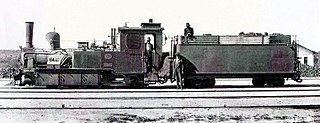This article does not cite any sources .(August 2019) (Learn how and when to remove this template message) |
| C39 road | |
|---|---|
| Highway system | |
| Transport in Namibia |

C39 is an untarred road in central Namibia. It is 460 kilometres long and connects Torra Bay to Otavi. At Otavi the road connects with the B1 to Tsumeb and Windhoek and the B8 to Rundu.

Namibia, officially the Republic of Namibia, is a country in southern Africa. Its western border is the Atlantic Ocean; it shares land borders with Zambia and Angola to the north, Botswana to the east and South Africa to the south and east. Although it does not border Zimbabwe, less than 200 metres of the Zambezi River separates the two countries. Namibia gained independence from South Africa on 21 March 1990, following the Namibian War of Independence. Its capital and largest city is Windhoek, and it is a member state of the United Nations (UN), the Southern African Development Community (SADC), the African Union (AU), and the Commonwealth of Nations.

Otavi is a town of 4,000 inhabitants in the Otjozondjupa Region of central Namibia. Situated 360km north of Windhoek, it is the district capital of the Otavi electoral constituency. Most of the area is dolomitic (Precambrian) and the district was in the past renowned for its mineral wealth. Most of the deposits have now been exhausted.

B1 is one of the most important roads in Namibia, passing through the centre of the country in a north-south direction. It connects Noordoewer on the South African border with Oshikango in the north on the Angolan border. Important cities it passes through in a North-South direction include Oshikango, Ondangwa, Tsumeb, Otavi, Otjiwarongo, Okahandja, Windhoek, Rehoboth, Mariental, Keetmanshoop and Noordoewer.
| This Namibia-related article is a stub. You can help Wikipedia by expanding it. |












